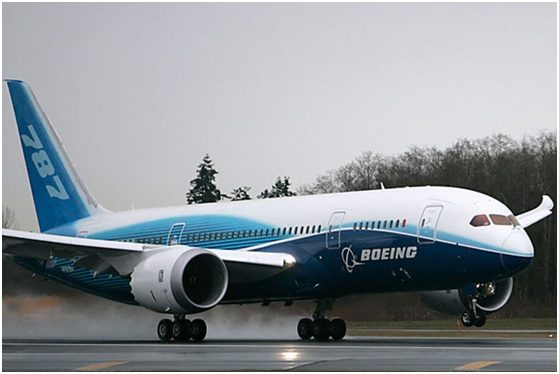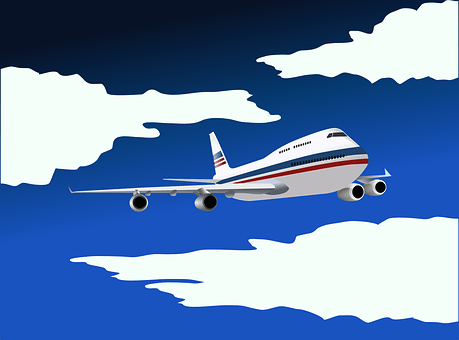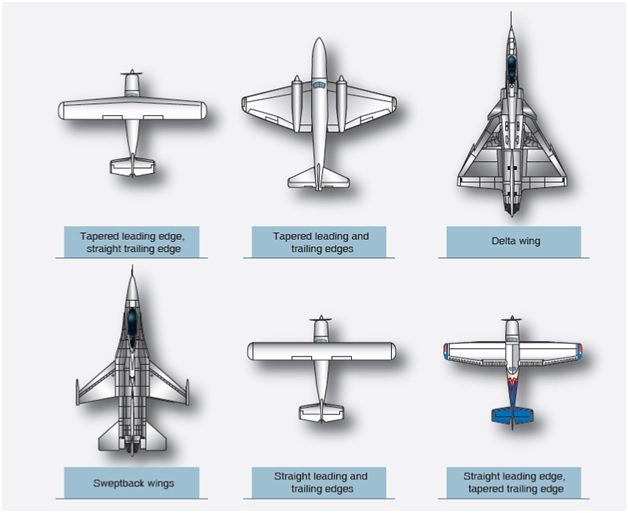Common Aviation Terms and Their Meanings

The common Aviation terms and their meanings that are known as Aviation lingo might sound like mumbo-jumbo to you, especially when it means something entirely different from what it is in normal language.
That is the reason this post regarding common Aviation Terms and Their Meanings has been written to educate those not familiar with them.
Here are several technical aviation terms and their meanings to aid your confusion.
Ps, you might want to bookmark this thread as it may come in very handy.

The A to Z Common Aviation Terms and Their Meanings
A
- Aerofoil/ airfoil: the shape of a surface that enables it to generate lift as air passes over it. It is the same consistent shape you get when you cut slices through the wing and other control surfaces from the side.
- Aft: the back end of an aircraft.
- AGL: Above Ground Level. The height is measured between an aircraft and a specified land area.
- Aileron: the control surface that allows the aircraft to roll (turn). There are two on each wing.
- Airliner: a commercial/passenger aircraft.
- Altimeter: An instrument that measures the plane’s altitude.
- AME/AMT: Aircraft Maintenance Engineer/ Technician. They perform the maintenance of the aircraft and see to it that they remain airworthy.
- AOA: Angle of Attack. The angle between the chord line of an airfoil and the relative airflow.
- AOG: Aircraft on Ground.
- The angle of incidence: the angle at which the wing’s (aerofoil’s) chord line is perpendicular to the plane’s longitudinal axis.
- Apron: the area at the airport where the planes land, get fueled, loaded, and unloaded. There are different types of apron configurations.
- ATC: Air Traffic Control. They’re in charge of communicating with the pilots about air traffic conditions and ensuring flight safety alongside the pilots. They sit in those tall control towers at airfields.
- ATM: Air Traffic Management.
- Aviation alphabet: this is also called the phonetic alphabet. Each letter is spelled out as a specified word instead of as just the letter. For example, A is spelled out as “Alpha”, C as “Charlie” and so on. It helps to prevent confusion between the pilot and ATC or other ground personnel when speaking.
- Aviator: a pilot or crew member of an aircraft.
- Avionics: a coinage between aviation and electronics. It refers to all the electronic/ computer systems used to control the plane.

B
- Bank: a rolling movement, whereby the plane bends by an angle for a turn.
- Black box: the flight recorder aboard the plane that tracks and stores data and voice information of the aircraft systems and environment. It is used in accident investigations.
- Bleed air: compressed air from the engine. It is used to supply air conditioning and de-icing systems in aircraft.
- BPR: bypass ratio. The ratio of bypassed air to the air that enters the core part of a turbofan engine.
C
- Captain: the pilot that takes the lead in flying the plane.
- CG: Centre of gravity. The point of the aircraft at which lateral and longitudinal equilibrium occurs.
- Chord line: an imaginary line drawn from the aircraft’s leading edge to its trailing edge.
- Cockpit/ flight deck: this is the part of the aircraft where the pilots and sometimes, flight engineers stay. It has all the switches and other controls used to fly the plane. It also has warning systems that let the pilots know the status of the plane and the environment outside the plane.
- Course: the direction in which the aircraft is moving.
- Crosswind: wind that blows in a direction perpendicular to the aircraft’s course.
- Cruise: an aircraft is said to be cruising when it is moving at a constant speed at a mostly constant altitude. Cruise is the phase of flight attained after an aircraft finishes its climbing. It is often the longest phase of flight.

D
- DME: Distance-Measuring Equipment. It is used to measure the distance of the aircraft from a fixed point.
- Downwash: air that pushes down on a wing.
- Drag: an aerodynamic force that resists the forward movement of aircraft.
E
- EASA: European Aviation Safety Agency. The regulatory body that oversees aviation in European countries.
- ECAM: Electronic Centralized Aircraft Monitor. This is one of the warning systems in the cockpit. It displays information about aircraft systems.ECAM is the name of Airbus aircraft while EICAS is the name of a similar system on Boeing aircraft.
- EICAS: Engine Indicating and Crew Alerting System.
- Elevator: This is the flight control that allows the aircraft to change its vertical attitude (pitch).
- Elevon: the combination of an elevator and aileron.
- Empennage: the tail of the aircraft.
F
- FAA: Federal Aviation Administration. They’re the regulatory body that oversees aviation in the US.
- The first officer (F/O): is the pilot that is second in command in the plane. S/he sits on the right side of the cockpit.
- Flaps: control surfaces on the wing that help the plane generate lift.
- Flaperon: a combination of a flap and an aileron.
- Flare: a flight maneuver performed during landing in which the aircraft nose is pitched upwards in preparation for landing.
- Flight plan: the flight information lodged by the pilot with the ATC. It includes the flight routes, destination, number of passengers and crew on board, and so on.
- Fly-By-Wire: a type of flight control system that replaces mechanical controls as it has an electronic interface which the pilots communicate with.
- FOD: Foreign Object Debris. These are foreign elements that may be sucked into the engine.
- Fuselage: the main part of the aircraft which includes where the passengers are seated.

G
- Galley: the part of the aircraft where food is prepared and stored.
- General aviation: any other aviation activity that is not for commercial or military purposes. This includes flying small planes for leisure.
- Glass cockpit: a term used to refer to a cockpit that has modern flight instrument displays instead of analog dials.
- Groundspeed: the horizontal speed of the aircraft relative to the ground below.
H
- Hangar: a building where aircraft are parked and stored. It is also where maintenance and assembly of the aircraft are carried out.
- Heading: the direction in which the aircraft is pointing. It is measured in degrees and is taken clockwise from the North.
- Horizontal stabilizer: a component of the aircraft that helps to stabilize the aircraft about the lateral axis. It is located at the tail of the aircraft and has an elevator attached to it.
- HP: High pressure.
I
- IAS: Indicated AirSpeed. This is the speed displayed as measured by the pitot tube. It does not take into account temperature or altitude like TAS.
- ICAO: International Civil Aviation Organization. The UN agency is concerned with global aviation rules and policies.
- IFR: Instrument Flight Rules. The rules that guide how pilots fly the plane when landing instruments (e.g. ILS) are available as required in low-visibility conditions.
- ILS: Instrument landing system. This is a radar-based system that enables the aircraft to have a safe and accurate landing.
- IP: Intermediate Pressure.

J
- Jet: an aircraft that is powered by one or more jet (turbojet/turbofan) engines.
K
- Kneeboard: it is attached to pilots’ thighs as a clipboard that allows them to organize tools, charts, and so on.
- Knot: a unit of speed used in aviation and sea navigation. 1 knot is 1 nautical mile per hour.
L
- Landing gear: the assembly that is employed when the plane touches down, whether on the ground or on water. There are two types: the main landing gear and the nose landing gear. The nose landing gear is at the front of the aircraft and is actually used to steer the aircraft in the desired direction on the ground. The main landing gear helps ensure a smoother impact with the ground as it absorbs the shock from landing. Landing gear can be retractable or permanently extended, as in smaller aircraft.
- Lift: the aerodynamic force that allows the aircraft to rise above the ground.
- Load factor: the ratio of occupied seats to available seats on aircraft.
- LP: Low Pressure.
M
- Mach: the ratio of the airspeed of the aircraft to the speed of sound at the specific altitude of the aircraft.
- Mayday: this is an internationally accepted distress call. It was actually derived from the French phrase ‘m’aidez’ which translates to ‘help me‘.
- MRO: Maintenance Repair Overhaul. These are facilities that handle the maintenance, small and large repairs of aircraft and engines.
- MSL: Mean Sea Level. It is from this point, which is considered to be the average level of the earth’s oceans, that the altitude of the aircraft is often measured.
- MTOW: Maximum Take-off Weight. This is the rated maximum weight with which the aircraft can take off, including the payload.
N
- Narrow-body aircraft: an aircraft that has only one aisle in its passenger area.
- Navaid: navigational aid. These are instruments or systems that enable the aircraft to navigate through the air.
- NM: Nautical Miles. A unit system that is used specifically in aviation and sea navigation to measure distance. 1 nm corresponds to 1,852 m.
- NOTAM: Notice to Airmen. A notice containing important information relevant to flight operations is sent to alert pilots.
- NTSB: National Transportation Safety Board. They are a federal agency that is responsible for investigating civil aviation accidents in the US.
O
- OAT: outside air temperature.
- OEM: Original Equipment Manufacturer. This refers to the manufacturer of the aircraft, engines, or aircraft components.
P
- Payload: the weight of all passengers, crew, equipment, and luggage on board.
- PFD: Primary Flight Display. The main screen supplies information to pilots in the cockpit.
- Pitch: up-and-down movement of the plane nose, about the lateral axis.
- Pitot tube: a device that is used to measure air pressure. It is located on the exterior of the plane.
- POH: Pilot Operating Handbook. A flight manual that contains important safety information and procedures for the pilot(s).
- Powerplant: the part of the engine that provides thrust power, i.e., the engine.
- Propeller: a component that contains airfoil blades that generate thrust as they rotate. It acts as part of the propulsion system on lighter aircraft.
Q
- QAR: Quick Access Recorder. A flight recorder on board the aircraft provides quick and easy access to raw flight data through a cellular network or a USB. It is located in a more accessible part of the aircraft than the black box.
- Quadraplane: an aircraft that has 4 wings of the same size.
R
- Radar: Radio Detecting And Ranging.
- Roll: movement of the aircraft about the longitudinal (front-to-back) axis. It is the up-and-down movement of the wings.
- Rudder: This is the flight control that aids the directional movement (yaw) of the aircraft.
- Ruddervator: the combination of a rudder and elevator.
S
- Skid: a sliding motion outward of a turn of an aircraft that occurs when a turn or halt is made too quickly. The tail of the aircraft appears to follow a path that appears to be outside that of the nose.
- Slip: a sliding motion inward of a turn of an aircraft that occurs when the aircraft makes a very steep turn. In a slip, the aircraft simultaneously moves sideward and forward.
- SQUAWK: the corresponding 4-digit code of an aircraft that is used for identification with the ATC.
- Stall: the point at which the airfoil’s lift starts decreasing as it exceeds its critical AOA.
- Straight and level flight: this occurs when the plane does not change its direction or altitude.

T
- TAS: True AirSpeed. The speed of the aircraft as it moves through the air is corrected by the temperature and altitude.
- TCAS: Traffic Collision Avoidance System. It is a system that helps prevent mid-air collisions between aircraft.
- Thrust: the force produced by the engines that counters drag and propel the aircraft forward.
- Track: the path over the ground in which an aircraft has already flown.
- Transponder: a piece of onboard equipment that transmits and responds to radio signals used by ATC and navaids.
- Turbofan: a type of aircraft engine that combines a turbojet system with a ducted fan at the front of the engine. Some of the airflows are burnt while some are bypassed.
- Turbojet: a type of aircraft engine that has a compressor, turbine, burner, and exhaust section in its assembly. It produces thrust by compressing and burning the airflow that enters the engine.
- Turboprop: a type of aircraft engine that uses a turbojet system combined with a propeller at the front of the engine.
U
- Upwash: air that pushes upward on a wing.
V
- Vertical stabilizer: the component that helps to stabilize the aircraft about the vertical axis. It is located at the aircraft’s tail and has a rudder attached to it.
- VFR: Visual Flight Rules. The rules that guide how pilots fly the plane when landing instruments are not available, and therefore have to operate using only visual references.
- VOR: VHF OmnidirectionalRange. This is a radar-based system that transmits signals that, when received by the aircraft receiver, can tell the ground station’s bearing to the aircraft with respect to the magnetic North. When used together with DME, VOR helps to tell the exact position of the aircraft.

W
- Widebody aircraft: an aircraft that has two aisles in its fuselage.
- Wind shear: a sudden change in the wind direction or speed at any angle.
- Winglet: a small curved airfoil attached to the tip of the wing that helps to improve fuel efficiency.
- Wingspan: the length across the aircraft wings, measured from tip to tip.
Y
- Yaw: the side-to-side movement of the aircraft about the vertical axis.
- Yoke: the control in the cockpit that receives the pilot commands for the elevator and ailerons. It looks like the steering wheel of a car.
Z
- Zulu time: this is the time zone in which all flight plans are filed. It is the same as UTC or GMT time zones.
Conclusion
The above A to Z Common Aviation Terms and Their Meanings are the popular terms you will be hearing in the Aviation industry. Share your experience with us through the comment section regarding the terms you have heard before that are not mentioned here for subsequent updates.
